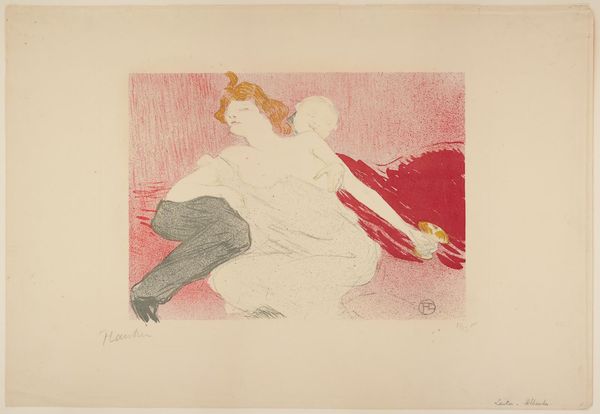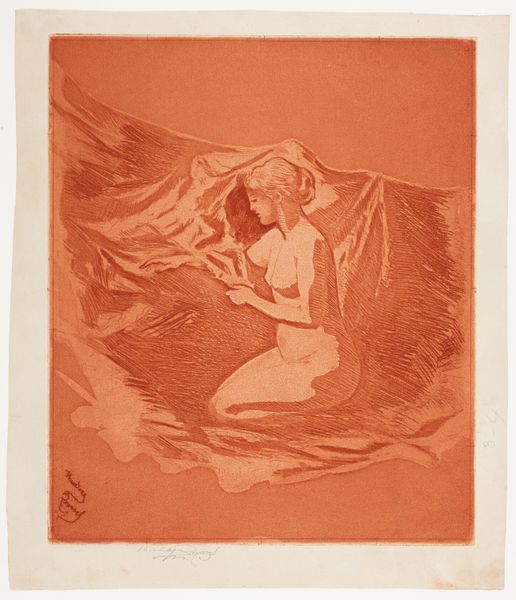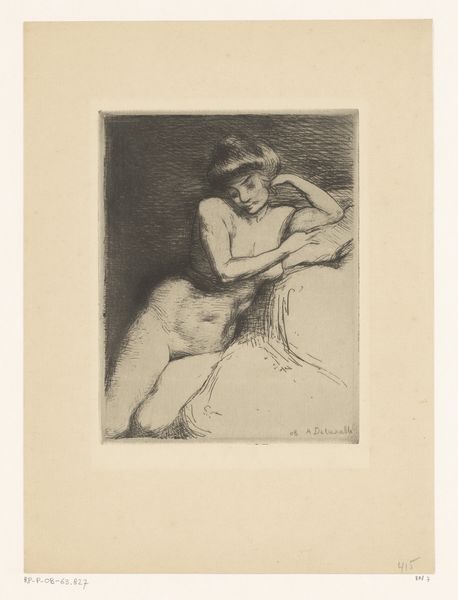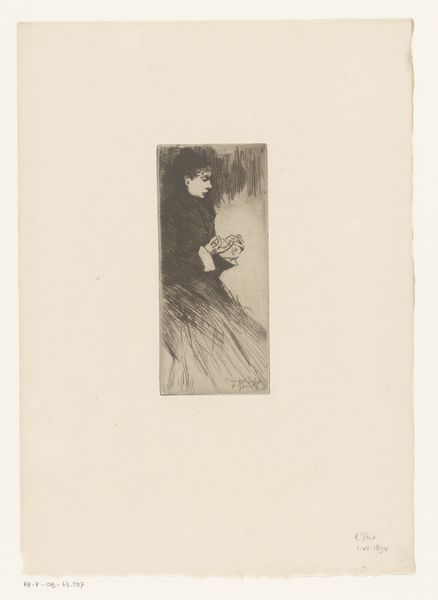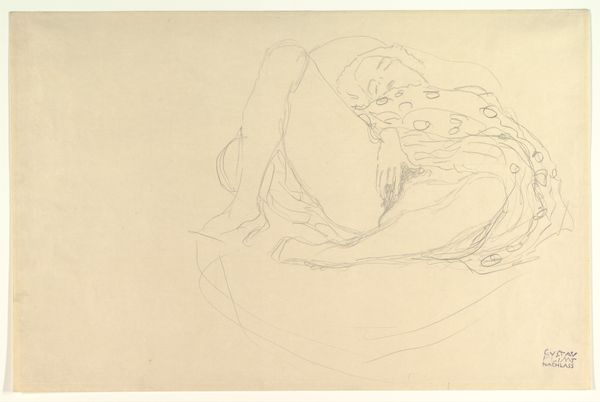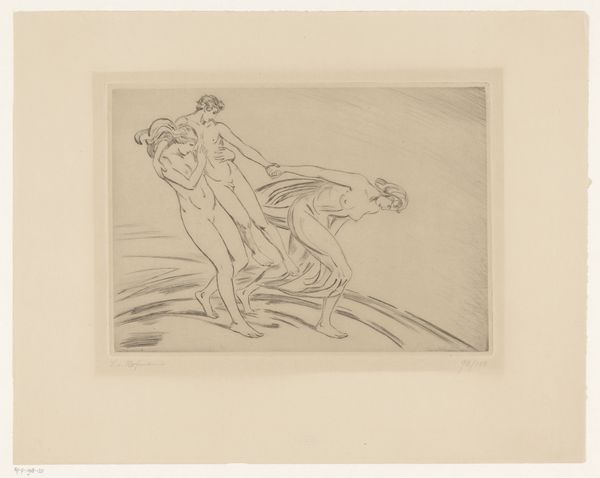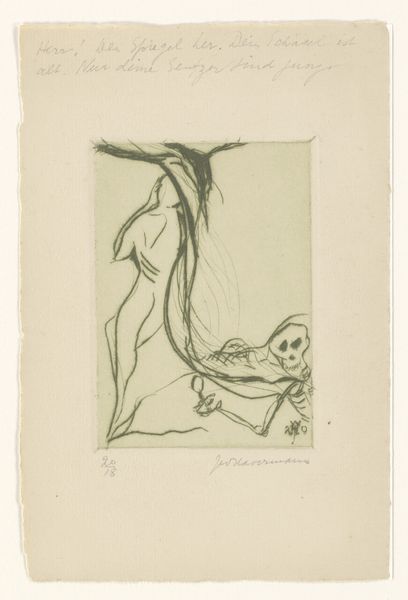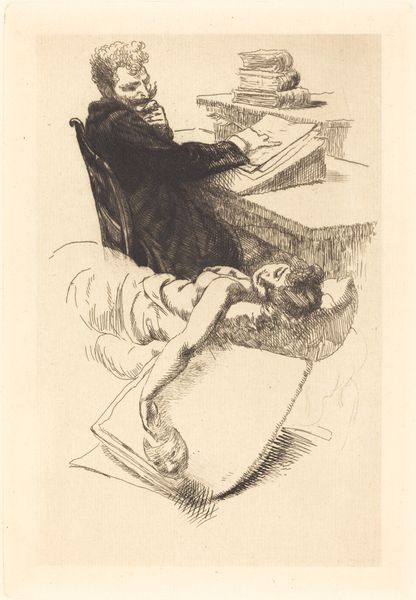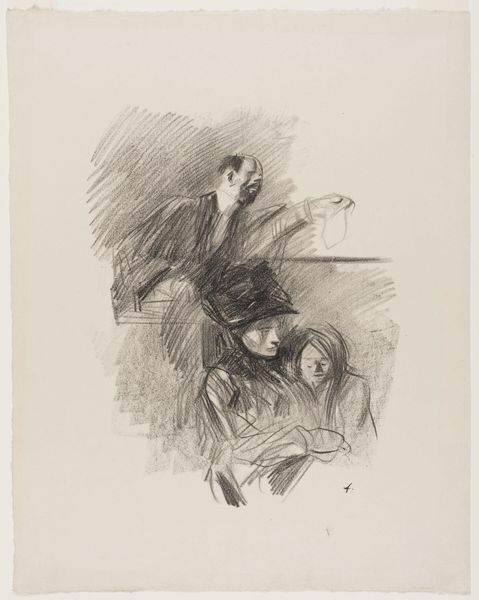
Dimensions: Sheet: 14 15/16 x 22 1/16 in. (38 x 56.01cm)
Copyright: Public Domain
Curator: This lithograph by Henri de Toulouse-Lautrec, titled "Débauché," dates back to 1896 and is now part of the collection here at the Metropolitan Museum of Art. Editor: My immediate reaction is one of voyeurism. We're intruding upon a private moment, a relaxed, almost languid scene with its muted, soft pinks and grays. Curator: Lautrec was, of course, fascinated with the underbelly of Parisian life and this piece offers a glimpse into a specific subculture and a particular perspective on gender roles within it. Note how the composition deliberately situates us outside the circle of intimacy. We become complicit onlookers. Editor: And there's a powerful, underlying tension in the symbolism here. We have the brazen redhead, almost an archetype of liberated sensuality, and the figure clinging to her… the ambiguous contours, do you feel like that contributes a ghostly presence? Curator: Absolutely. The use of pale washes almost erases the figure into an abstraction, perhaps hinting at the power dynamics within the image—one figure claiming power, another fading into obscurity or being objectified within their culture of intimacy. I also think about the queer elements within it. Editor: The hand holding a possible bar of soap! What do you make of it? It feels almost ritualistic, a suggestion of hygiene as social performance… anointing, perhaps, cleansing of pleasure? Curator: It makes me think about representations of women at the fin de siècle, their increased participation in the labor force in contrast with persistent moral judgements, the paradox of expanded personal freedoms and cultural expectations, like this scene playing out on the stage. Editor: And Lautrec's technique amplifies this ambiguity. The expressive line work suggests movement, immediacy… a fleeting moment captured. It feels authentic, and also constructed. It invites consideration for cultural rituals and daily lives and the intersection of identities. Curator: Precisely, it encourages us to see the art beyond simple themes of beauty or pleasure, by inviting viewers to question who dictates those meanings and who gets excluded by such representations. Editor: Thinking about those ambiguities allows us to interpret them within a wider network of queer identities. So many possible interpretations… and the dialogue itself enriches our reading, for sure.
Comments
No comments
Be the first to comment and join the conversation on the ultimate creative platform.
